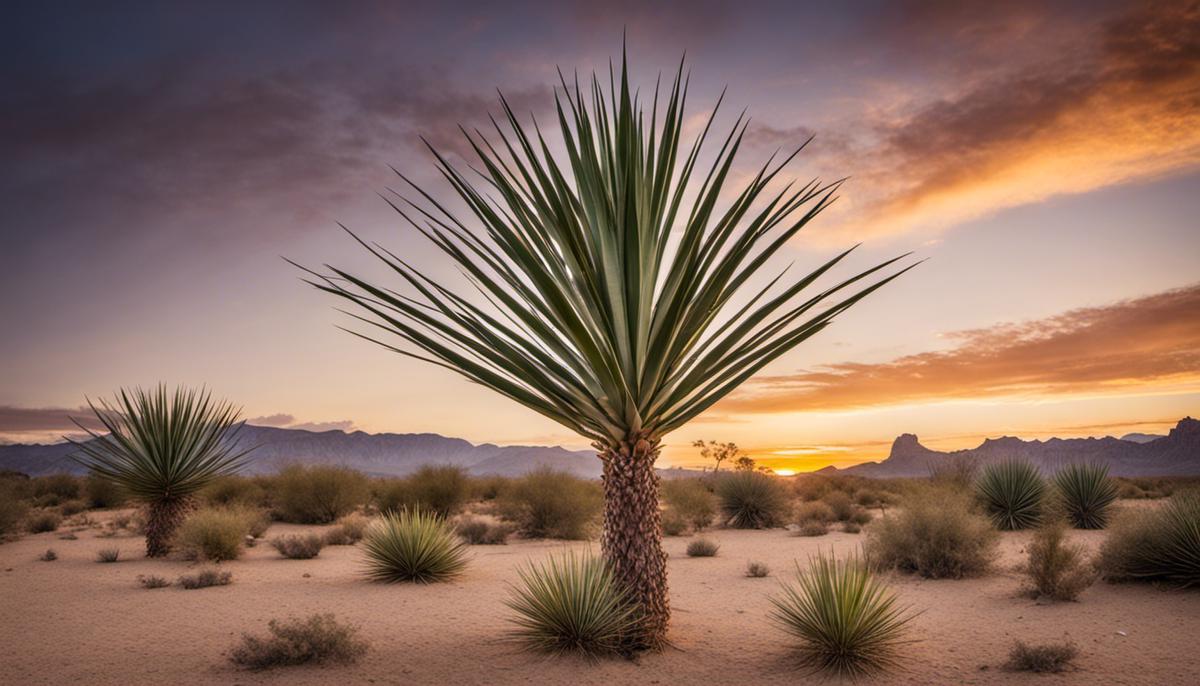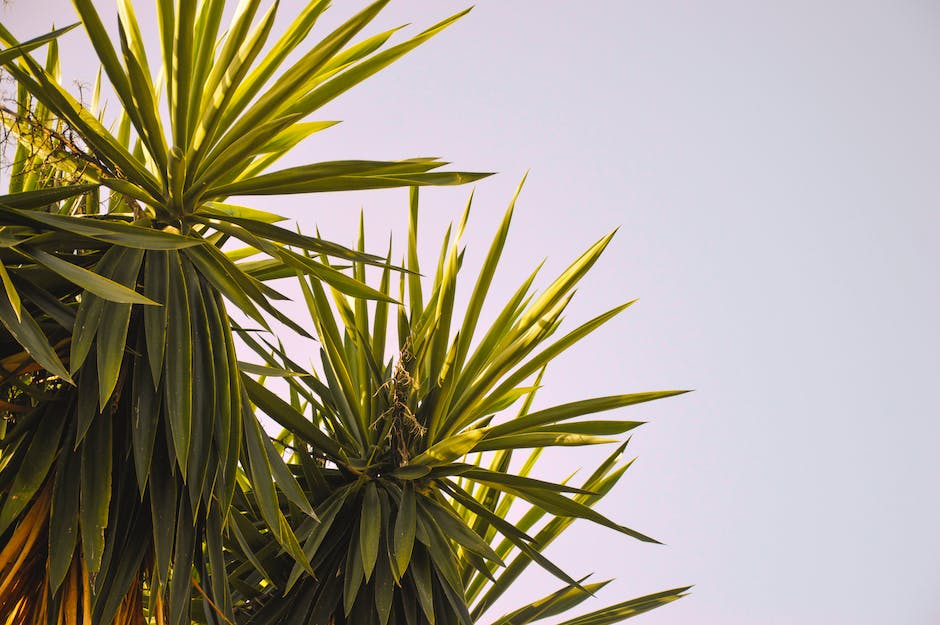Efficient Techniques to Eliminate Yucca Plants

Yucca plants, known for their hardy nature and unique aesthetic, are widespread across various parts of the world. However, despite their beauty, they can pose challenges to landowners and gardeners due to their invasive tendencies and the difficulty of their removal. This paper aims to delve into an in-depth understanding of yucca plants, highlighting their characteristics, common habitats and the reasons behind their problematic behavior. Significant emphasis will also be laid on comprehensive and efficient removal techniques. Both physical and chemical methods will be discussed, outlining the step-by-step procedures, necessary tools, safety precautions, and potential environmental impacts.
Understanding Yucca Plants
The Fascinating Yucca Plant: A Wonder and Woe in Gardening!
Step into the fascinating world of yuccas, uniquely robust and stunningly beautiful plants that are a favorite among many gardening enthusiasts! Yucca plants, with their sword-like leaves and towering blooms, effortlessly lend an exotic touch to any landscape. However, they come with their unique set of challenges, underscoring the necessity of understanding this member of the Asparagaceae family before introducing it into a garden setting.
Yucca plants are native to the dry and arid regions of the Americas and the Caribbean. They are notably drought-tolerant and are well-adapted to survival in harsh conditions, making them a robust choice for any garden. The genus Yucca comprises about fifty different species, all renowned for their architectural shape, evergreen foliage, and showy blooms – features that make them incredibly appealing to the hobby gardener.
While their splendor is undeniable, it is essential to understand a few critical facts about yucca plants to manage them efficiently within the gardening landscape. For one, they are aggressive growers. Left unchecked, a yucca can quickly spread, overtaking other plants and dominating a garden.
Their robust root system, while excellent for the plant’s survival, can become a gardener’s nightmare, with roots intertwining around pipes and seeping into cracks in walls and paving. Remove a yucca plant without entirely removing the root, and it’s almost guaranteed to sprout back – a testament to its remarkable resilience!
Another aspect of the yucca that requires particular attention is its leaves. Some species boast dagger-sharp leaves that can cause injury. Hence, careful placement away from walkways and play areas is advised for such species.
Now, while these attributes might make the yucca sound like a problem plant, it all comes down to robust management and understanding. Knowledge about its growth habit can help in selectively pruning and maintaining the plant within its space. Removal should involve utmost care to ensure the entire root is excised to prevent regrowth.
Yucca plants offer an undeniable aesthetic appeal to any garden, and a mutual respect between gardener and plant can ensure a harmonious coexistence. It’s about understanding that while yucca plants are indeed unconventional, they bring to the table a unique mix of strength, resilience, and elegance. Will the challenge be taken on? Only the brave, driven by the passion and love for horticulture, will know.

Physical Removal Techniques
Taking on a yucca plant removal task can seem daunting due to their aggressive growth, invasiveness, and robust root system, but with some practical knowledge and well-defined steps, it’s absolutely manageable. The removal process largely lies in understanding the biological nature of the yucca plant, along with the dedication and endurance of an avid gardening enthusiast.
The first step in physically removing a yucca plant is to wisely choose the best time. Typically, yucca plants are most vulnerable during the winter when the plant is dormant or during the dry summer spell when moisture levels are at their lowest. These are the ideal periods to strike.
Protection should always come first to avoid injuries from the sharp edged leaves typical to some yucca species. Heavyweight gardening gloves, sturdy eye protection, and long-sleeved gardening attire should suffice.
Start by trimming the yucca down to its stump. This not only makes it easier to manage but also minimizes potential harm. Use a sharp and clean pair of pruning shears to cut off each leaf at the base, and then use a hand saw to cut down the trunk at ground level.
Now, it’s time to tackle the deceptively robust root system. Dig around the base of the stump making sure to leave enough space around the edges to encapsulate the whole root sphere. Try to keep the size of the hole restricted to its essential minimum, as needless digging can be overly disruptive to the garden’s ecosystem.
Once the trench is deep enough, attempt to levitate the stump. A spade or garden fork can be handy to lift the central mass and sever the remaining roots. If the plant is particularly stubborn, it may require a sharp cutting tool, like a hori-hori or a root saw, to cut the taproot below the soil level.
Collect the remaining fragments for disposal. It is important to remember that yucca plants are incredibly tenacious, and even the smallest piece left behind can potentially regrow.
Lastly, refill the space with fresh soil and compost, ready to welcome a new inhabitant. It’s a beautiful day when a gardener replaces an unruly yucca with a plant that adds charm to the garden and respects its borders. Such is the harmonious co-existence of gardening, where understanding the nature of each plant, and managing it effectively, results in a thriving and aesthetically pleasing landscape.

Chemical Removal Techniques
Chemical solutions and their application in yucca plant management have proven to be another handy tool in the gardener’s arsenal, capable of ensuring effective removal of these hardy and robust plants. Utilizing a chemical solution can bring consummate results when needed, providing a great advantage when tackling particularly tenacious yucca plants.
Gardeners often turn to glyphosate, the active ingredient found in many selective and non-selective herbicides. Selective herbicides are designed to target specific plant types while sparing others, whereas non-selective herbicides, like glyphosate, are not species-specific and will kill most plants they come in contact with. For proper application, glyphosate should be applied directly to the yucca plant’s cut stems. This takes advantage of the plant’s natural processes, funneling the glyphosate into the root system and poisoning the entire plant.
However, glyphosate isn’t the only option. Triclopyr is another popular choice for yucca plant removal. It’s an ingredient commonly found in broadleaf weed control products and can be effective against yucca plants. Similar to glyphosate, triclopyr should be applied to the cut stem of the yucca for optimal effectiveness.
Remember, the judicious application is vital when using chemical solutions. A liberal application will not necessarily result in quicker or more thorough results, and can be harmful to the surrounding area. Always adhere to the manufacturer’s instructions for safe and effective application of these potent compounds.
Protection measures are equally important when dealing with chemical solutions. Protective gear such as gloves, safety glasses, and long-sleeved clothing should be halcyon words for all gardeners. These precautions prevent direct contact with skin and help avoid any potential chemical injuries.
Allow time for the chemicals to do their work. Each product will have a different timeline, so it’s crucial to check and follow the product’s label instructions. During this period, ensure pets or children do not access the treated area.
After the appropriate waiting period, the yucca plant can be removed. Typically, it will have wilted and become easier to handle. Any residual root fragments should deteriorate over time, erstwhile pumped full of the glyphosate or triclopyr. Then, the area can be replanted, preferably with native species that will help restore the balance in your garden.
Undoubtedly, chemical solutions have some environmental implications. But used selectively, in combination with other methods, gardeners can yield successful results when looking to control or eradicate persistent yucca plants in their landscapes. The key, like with yucca plant management in general, is to strike that balance between control and coexistence, assuring these magnificent desert species can still be appreciated without letting them overtake our cherished garden spaces.

Equipped with a deeper understanding of yucca plants and their removal techniques, landowners and gardeners alike can take proactive steps to manage these persistent perennials. Being fully prepared, with all the necessary tools and safety equipment, along with a clear idea of what to expect, makes the daunting task of yucca elimination significantly more manageable. Furthermore, the right choice of herbicides, coupled with proper application techniques, can drastically enhance the removal process’s effectiveness. However, the implications of herbicides on surrounding plant life and the environment cannot be overlooked. Therefore, careful and informed decision-making is crucial in successfully getting rid of yucca plants, preserving the balance of your garden and contributing positively to the broader environment.



